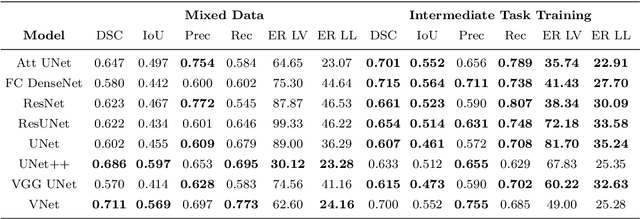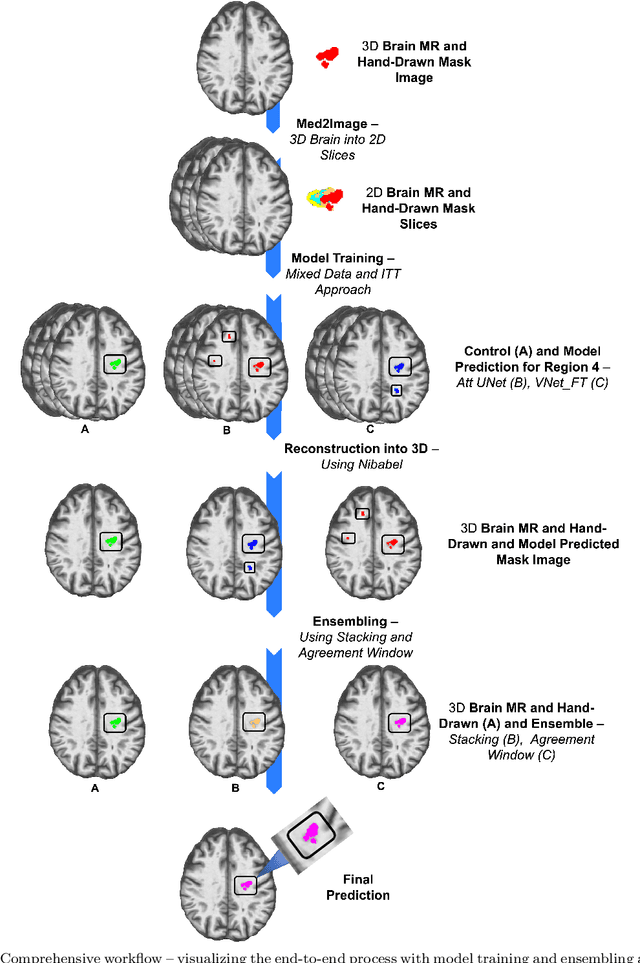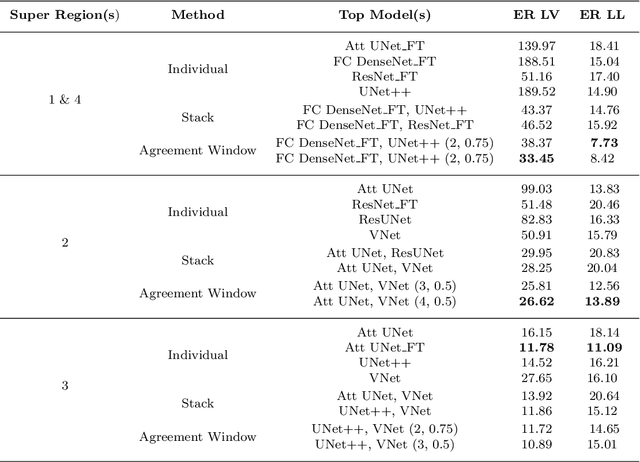Advait Gosai
Automated Ensemble-Based Segmentation of Pediatric Brain Tumors: A Novel Approach Using the CBTN-CONNECT-ASNR-MICCAI BraTS-PEDs 2023 Challenge Data
Aug 14, 2023



Abstract:Brain tumors remain a critical global health challenge, necessitating advancements in diagnostic techniques and treatment methodologies. In response to the growing need for age-specific segmentation models, particularly for pediatric patients, this study explores the deployment of deep learning techniques using magnetic resonance imaging (MRI) modalities. By introducing a novel ensemble approach using ONet and modified versions of UNet, coupled with innovative loss functions, this study achieves a precise segmentation model for the BraTS-PEDs 2023 Challenge. Data augmentation, including both single and composite transformations, ensures model robustness and accuracy across different scanning protocols. The ensemble strategy, integrating the ONet and UNet models, shows greater effectiveness in capturing specific features and modeling diverse aspects of the MRI images which result in lesion_wise dice scores of 0.52, 0.72 and 0.78 for enhancing tumor, tumor core and whole tumor labels respectively. Visual comparisons further confirm the superiority of the ensemble method in accurate tumor region coverage. The results indicate that this advanced ensemble approach, building upon the unique strengths of individual models, offers promising prospects for enhanced diagnostic accuracy and effective treatment planning for brain tumors in pediatric brains.
Automated Ensemble-Based Segmentation of Adult Brain Tumors: A Novel Approach Using the BraTS AFRICA Challenge Data
Aug 14, 2023Abstract:Brain tumors, particularly glioblastoma, continue to challenge medical diagnostics and treatments globally. This paper explores the application of deep learning to multi-modality magnetic resonance imaging (MRI) data for enhanced brain tumor segmentation precision in the Sub-Saharan Africa patient population. We introduce an ensemble method that comprises eleven unique variations based on three core architectures: UNet3D, ONet3D, SphereNet3D and modified loss functions. The study emphasizes the need for both age- and population-based segmentation models, to fully account for the complexities in the brain. Our findings reveal that the ensemble approach, combining different architectures, outperforms single models, leading to improved evaluation metrics. Specifically, the results exhibit Dice scores of 0.82, 0.82, and 0.87 for enhancing tumor, tumor core, and whole tumor labels respectively. These results underline the potential of tailored deep learning techniques in precisely segmenting brain tumors and lay groundwork for future work to fine-tune models and assess performance across different brain regions.
Meta-Analysis of Transfer Learning for Segmentation of Brain Lesions
Jun 20, 2023



Abstract:A major challenge in stroke research and stroke recovery predictions is the determination of a stroke lesion's extent and its impact on relevant brain systems. Manual segmentation of stroke lesions from 3D magnetic resonance (MR) imaging volumes, the current gold standard, is not only very time-consuming, but its accuracy highly depends on the operator's experience. As a result, there is a need for a fully automated segmentation method that can efficiently and objectively measure lesion extent and the impact of each lesion to predict impairment and recovery potential which might be beneficial for clinical, translational, and research settings. We have implemented and tested a fully automatic method for stroke lesion segmentation which was developed using eight different 2D-model architectures trained via transfer learning (TL) and mixed data approaches. Additionally, the final prediction was made using a novel ensemble method involving stacking and agreement window. Our novel method was evaluated in a novel in-house dataset containing 22 T1w brain MR images, which were challenging in various perspectives, but mostly because they included T1w MR images from the subacute (which typically less well defined T1 lesions) and chronic stroke phase (which typically means well defined T1-lesions). Cross-validation results indicate that our new method can efficiently and automatically segment lesions fast and with high accuracy compared to ground truth. In addition to segmentation, we provide lesion volume and weighted lesion load of relevant brain systems based on the lesions' overlap with a canonical structural motor system that stretches from the cortical motor region to the lowest end of the brain stem.
SAM vs BET: A Comparative Study for Brain Extraction and Segmentation of Magnetic Resonance Images using Deep Learning
Apr 19, 2023Abstract:Brain extraction is a critical preprocessing step in various neuroimaging studies, particularly enabling accurate separation of brain from non-brain tissue and segmentation of relevant within-brain tissue compartments and structures using Magnetic Resonance Imaging (MRI) data. FSL's Brain Extraction Tool (BET), although considered the current gold standard for automatic brain extraction, presents limitations and can lead to errors such as over-extraction in brains with lesions affecting the outer parts of the brain, inaccurate differentiation between brain tissue and surrounding meninges, and susceptibility to image quality issues. Recent advances in computer vision research have led to the development of the Segment Anything Model (SAM) by Meta AI, which has demonstrated remarkable potential in zero-shot segmentation of objects in real-world scenarios. In the current paper, we present a comparative analysis of brain extraction techniques comparing SAM with a widely used and current gold standard technique called BET on a variety of brain scans with varying image qualities, MR sequences, and brain lesions affecting different brain regions. We find that SAM outperforms BET based on average Dice coefficient, IoU and accuracy metrics, particularly in cases where image quality is compromised by signal inhomogeneities, non-isotropic voxel resolutions, or the presence of brain lesions that are located near (or involve) the outer regions of the brain and the meninges. In addition, SAM has also unsurpassed segmentation properties allowing a fine grain separation of different issue compartments and different brain structures. These results suggest that SAM has the potential to emerge as a more accurate, robust and versatile tool for a broad range of brain extraction and segmentation applications.
 Add to Chrome
Add to Chrome Add to Firefox
Add to Firefox Add to Edge
Add to Edge